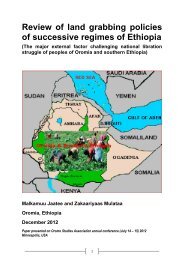freakonomics
freakonomics
freakonomics
Create successful ePaper yourself
Turn your PDF publications into a flip-book with our unique Google optimized e-Paper software.
One of the society’s aims was to bring together scholars from various fields who might<br />
not otherwise have occasion to meet. Venkatesh soon encountered another anomalous<br />
young Fellow, one who also failed the society stereotype. This one happened to be an<br />
economist who, instead of thinking grand macro thoughts, favored his own list of offbeat<br />
micro curiosities. At the very top of his list was crime. And so, within ten minutes of their<br />
meeting, Sudhir Venkatesh told Steven Levitt about the spiral notebooks from Chicago<br />
and they decided to collaborate on a paper. It would be the first time that such priceless<br />
financial data had fallen into an economist’s hands, affording an analysis of a heretofore<br />
uncharted criminal enterprise.<br />
So how did the gang work? An awful lot like most American businesses, actually, though<br />
perhaps none more so than McDonald’s. In fact, if you were to hold a McDonald’s<br />
organizational chart and a Black Disciples org chart side by side, you could hardly tell the<br />
difference.<br />
The gang that Venkatesh had fallen in with was one of about a hundred branches—<br />
franchises, really—of a larger Black Disciples organization. J. T., the college-educated<br />
leader of his franchise, reported to a central leadership of about twenty men that was<br />
called, without irony, the board of directors. (At the same time that white suburbanites<br />
were studiously mimicking black rappers’ ghetto culture, black ghetto criminals were<br />
studiously mimicking the suburbanites’ dads’ corp-think.) J. T. paid the board of<br />
directors nearly 20 percent of his revenues for the right to sell crack in a designated<br />
twelve-square-block area. The rest of the money was his to distribute as he saw fit.<br />
Three officers reported directly to J. T.: an enforcer (who ensured the gang members’<br />
safety), a treasurer (who watched over the gang’s liquid assets), and a runner (who<br />
transported large quantities of drugs and money to and from the supplier). Beneath the<br />
officers were the street-level salesmen known as foot soldiers. The goal of a foot soldier<br />
was to someday become an officer. J. T. might have had anywhere from twenty-five to<br />
seventy-five foot soldiers on his payroll at any given time, depending on the time of year<br />
(autumn was the best crack-selling season; summer and Christmastime were slow) and<br />
the size of the gang’s territory (which doubled at one point when the Black Disciples<br />
engineered a hostile takeover of a rival gang’s turf). At the very bottom of J. T.’s<br />
organization were as many as two hundred members known as the rank and file. They<br />
were not employees at all. They did, however, pay dues to the gang—some for protection<br />
from rival gangs, others for the chance to eventually earn a job as a foot soldier.<br />
The four years recorded in the gang’s notebooks coincided with the peak years of the<br />
crack boom, and business was excellent. J. T.’s franchise quadrupled its revenues during<br />
this period. In the first year, it took in an average of $18,500 each month; by the final<br />
year, it was collecting $68,400 a month. Here’s a look at the monthly revenues in the<br />
third year:









